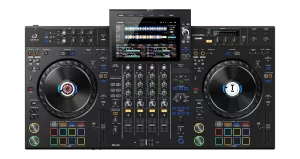
The Lowdown
The AlphaTheta XDJ-AZ is the ultimate flagship, four-channel standalone DJ unit and controller for Rekordbox and Serato software. Based closely upon AlphaTheta/Pioneer DJ’s pro club gear, namely the CDJ-3000 multi players and the DJM-A9 mixer, this one nails it, fixing all the shortcomings of the XDJ-XZ and delivering everything most serious DJs could want in an all-in-one unit, in a more practical package and at a lower price than the separates would cost. Oh, and if you buy the new HDJ-F10 SonicLink headphones too, it connects directly with them, for wire-free headphones when DJing.
Video Review
There’s a button for activating the SonicLink wireless headphone option on the front. Looping has been upgraded with four and eight-beat options on auto loop. There are more pad modes, the headline one being key shift, which works with the new key sync across all standalone channels. The in-jog displays have been improved so that they can show the status of the performance pad setting, something which is also shown on the screen. I could go on.
A quick peek at the options once you insert a USB shows that not only does the unit have CloudDirectPlay, so you can access your music via Dropbox, but also Beatport integrated as a subscription service. (While the latter also means that the unit gains onboard analysis, it’s still best to analyse your music ahead of time on a laptop to use via USB or link export as before.)
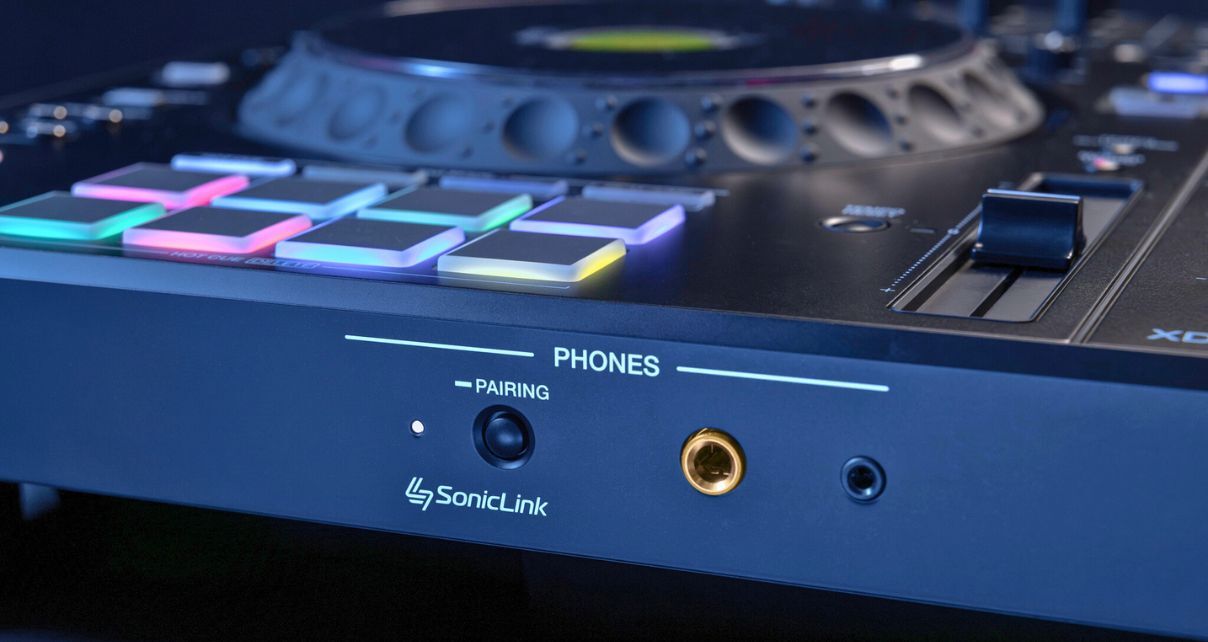
Around the back, things have been simplified with the Pro DJ Link Ethernet hub sadly no longer there (there’s only a single Ethernet socket), and only two channels of external inputs, which is all similar to the Opus Quad. The designers have obviously thought that few people add Pro DJ Link equipment to these units, and if they do, then paying $20 extra for a simple Ethernet hub won’t be too much trouble for such users. Likewise, they’ve clearly concluded that when it comes to adding extra equipment in the “old-fashioned” way, two channels are enough.
Setting up
As mentioned, the best/most usual way to set this unit up is to export some laptop-prepared music on a Rekordbox USB and plug it into the unit (or connect directly to a laptop via USB, Ethernet or now Wi-Fi) in Link Export mode.
If you want to use it with Serato or Rekordbox, that’s possible as well, making it a flagship controller as well as a standalone unit, and this is as it always has been: Install that software (it unlocks both) plus any drivers for Windows users, plug the unit into the laptop, and select “Software control” on the screen under “Sources”.

Also as mentioned, you can use CloudDirectPlay and Beatport, although you’ll need to insert a verified USB device for the former and enter your username/password every time in order to log into the latter – it would be nice if it remembered your Beatport credentials for you.
However, once you have logged in, wherever your music’s coming from, the library, playlists, track views, and so on all work as you would imagine within Pioneer/AlphaTheta’s ecosystem, which is to say, very well. Let’s learn some more about how it is to use the XDJ-AZ…
In Use
New screen benefits
The first thing we loved about this is just how much slicker the screen is. It contains so much more information. It’s responsive, it’s bright, and while not likely as smooth as your smartphone, it’s certainly good enough refresh rate-wise to make it a joy to use.
As well as four full waveforms, the screen has two zoomed-in main waveforms, information about the beat effects, pads, key, loops and so on, which is all good. But the real joy is in the library area. Now, because of the bigger screen, you can see 13 tracks instead of eight, which makes such a big difference when navigating your music.

There’s a new button called “mixer settings”, which brings a lot of the features often found on hardware buttons (such as crossfader assign and similar) into one easy screen that gets its own button for showing and hiding. This actually works really well and alongside the existing settings screens, allows you to configure the controller exactly how you want it, very fast.
Sources, schmources
In order to test the unit, we tried it with all the sources that we could in the time we had. USB, Pro DJ Link on channels three and four, software control with Rekordbox (we couldn’t do it with Serato yet as that’s not out at the time of recording and writing this review). We tried Beatport, CloudDirectPlay, Rekordbox, Link Export over Wi-Fi, USB and Ethernet… indeed the only thing we didn’t test was the iOS or Android app.
What we did find was that the switching between these was simple and intuitive. It’s one of the great strengths of this unit that it is going to work with pretty much anything that you want to use it with, music-wise.
AlphaTheta have even told us that they are going to be introducing more streaming services down the line – although experience tells us not to hold our breath for that as these things tend to get delayed (or never even happen). For this audience though, of course, Beatport is the big one.
Link Cue and Gate Cue
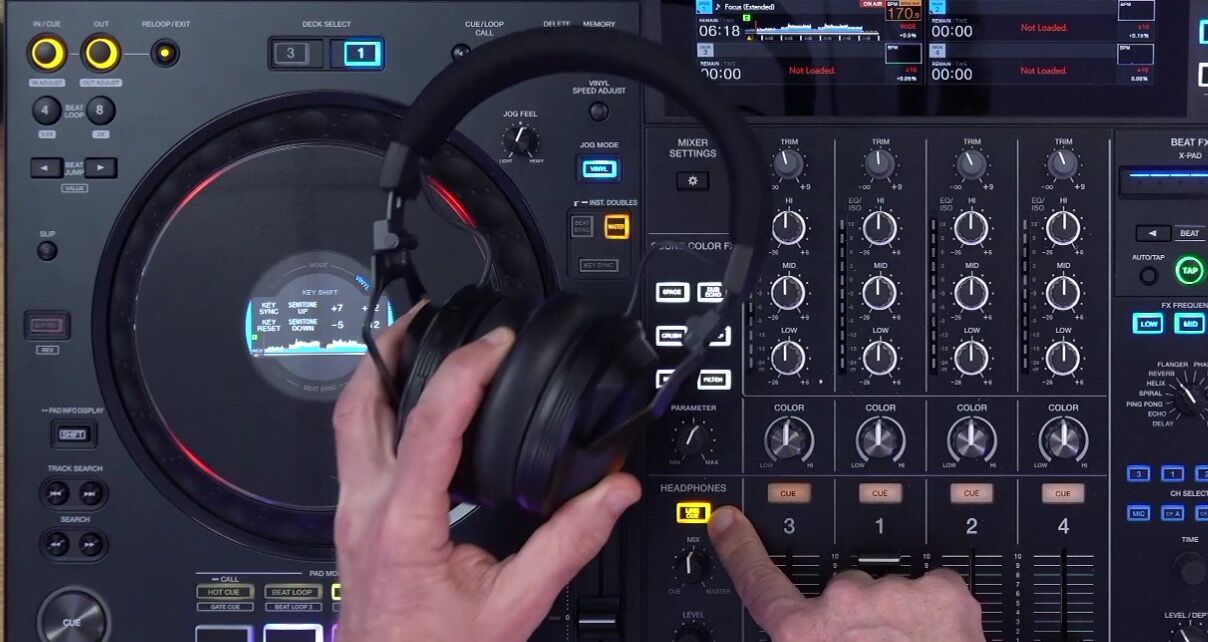
One thing we absolutely loved was the new Link Cue feature, which lets you not only tap the waveforms in the library to preview a track in your headphones on the screen, but also listen ahead to the currently playing track in your headphones, which is great for picking a mix out point. You just tap the waveform with the Link Cue button enabled in order for this to work. It’s a great addition.
Likewise, coming as we do from controllers, we’ve always missed Gate Cue on this style of gear, where your cue buttons are momentary if the track happens to be paused when you press them. And the good news is that it’s one of the new pad mode functions, so there’s no need for elaborate workarounds to use cues in that manner on this unit.
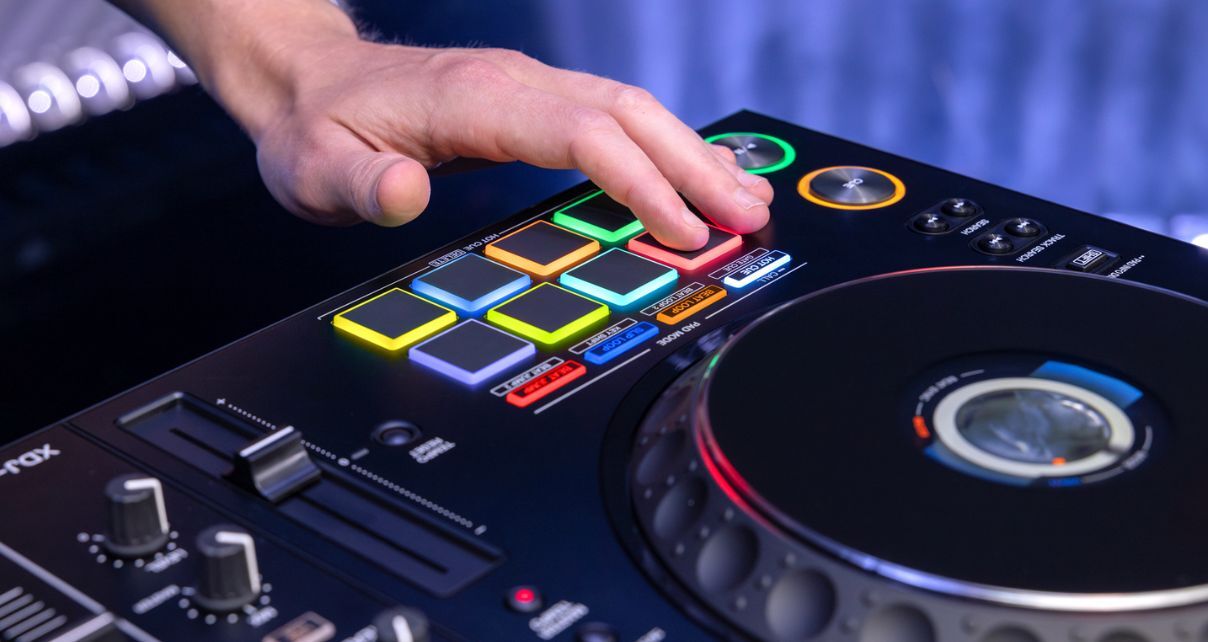
We didn’t dare test it, but there is full track emergency play should you be DJing with streaming music in front of an audience and happen to lose the internet, which is pretty cool. All said, and especially when combined with the HDJ-F10 headphones that we tested it with, giving you no wire between you and the unit on those headphones, this was both everything we would have expected and a joy to use.
Overall, using it feels as if the training wheels have been taken off the XDJ-XZ. And so while nothing felt really surprising here, everything felt like such a joy. It’s snappy to use so clearly nice and powerful under the hood, and sound quality is excellent as well, with an improved 32-bit ESS converter, meaning few will complain about that side of things.
What it’s missing
Things we missed? It would have been great if this unit had SonicLink output as well so it could work with the Wave Eight speakers without a need for cables. Really not sure why they didn’t do that when installing SonicLink for the headphones. Feels like a missed opportunity.

Extra streaming services would definitely be nice, and we are sure that some will bemoan the loss of the Ethernet hub around the back, along with possibly the third and fourth external analogue inputs. But really, in all meaningful areas, this is a truly complete unit.
Conclusion
If you’re serious about your DJing and you’ve eyed the CDJ-3000s and the DJM-A9 mixer, but balked at the price and complexity, really this is a no-brainer. Drop your three grand and get a unit that’ll last you for the next five to ten years, taking everything you throw at it. It looks good, it sounds good, and it corrects all the faults of the unit that came before it. The only thing we have to say is: what took them so long?
Your only real choice then, if you’re looking at this kind of price point, is how it stacks up against similar units. So let’s take a quick look at this device against some of the competition – most of which comes from other gear from AlphaTheta/Pioneer DJ.
AlphaTheta XDJ-AZ vs Denon DJ Prime 4+

Outside of Pioneer DJ/AlphaTheta’s own ecosystem, the Denon DJ Prime 4+ is the only real competitor for this unit. The Prime 4+ has more streaming services and can control DJ lighting. It also has a more sophisticated way of handling logins via a user account, which currently is less clunky than the way the XDJ-AZ does it.
Ultimately, it’s a smaller (especially the jogwheels), cheaper, older, but still immensely capable unit. And has remained largely unchanged for half a decade for a reason: Because it was way ahead of its time at launch, and continues to impress today with constant updates, something that Pioneer DJ/AlphaTheta are nowhere near as responsive with.
Your choice here is going to come down to budget, and how much you care about having something in the AZ that is, for want of a better phrase, “the club standard”.
AlphaTheta XDJ-AZ vs Pioneer DJ XDJ-XZ
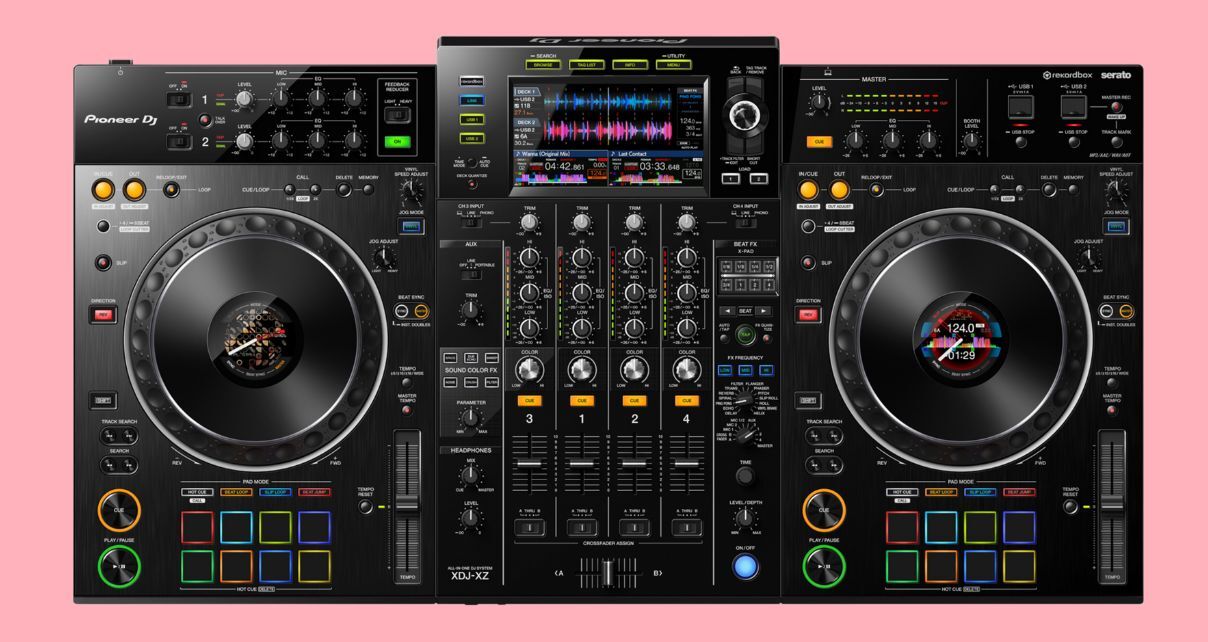
There’s absolutely no comparison here: For most people, go for the newer one, its direct replacement. The XZ succeeded despite being technologically behind, even at launch. It has a smaller screen, far lower processor capability, only two channels standalone, no streaming, no Bluetooth, no CloudDirectPlay, no SonicLink, etc, etc.
What the XDJ-XZ does have though is better connectivity, insofar as having a built-in Ethernet hub and four channels of external analogue input. And so if you just want a unit that you’re primarily going to use to plug in lots of extra sources and still have something that looks and feels the way club gear’s always looked and felt, you might be able to pick up a bargain by grabbing an XDJ-XZ.
But that’s the only possible reason you’d prefer the XZ over the AZ. Put it this way, once you’ve played on the AZ, you’re never going to want to go back to the old one.
AlphaTheta XDJ-AZ vs Pioneer DJ Opus Quad

In many ways, these units are similar. They both have four-channel standalone capability, both have a gorgeous large touchscreen, and are both full-sized, expensive, heavy DJ units that you can use with all kinds of music sources.
However, the Opus Quad doesn’t have Beatport, can’t work with CDJs over Pro DJ Link, and isn’t in either look or feel similar at all to club gear. It’s aimed at a different audience: high-end mobile DJs or trendy venues where the look of the gear is as important as what it does – and possibly people wanting an amazing looking piece of DJ furniture for home too!
Both are extremely capable, and you’ll instinctively know at first glance which one might be right for you. Just double-check the specifications to make sure the Opus Quad has got the features that you want if you err in that direction, as it’s not quite as fully specced as the XDJ-AZ.
AlphaTheta XDJ-AZ vs Pioneer DJ XDJ-RX3
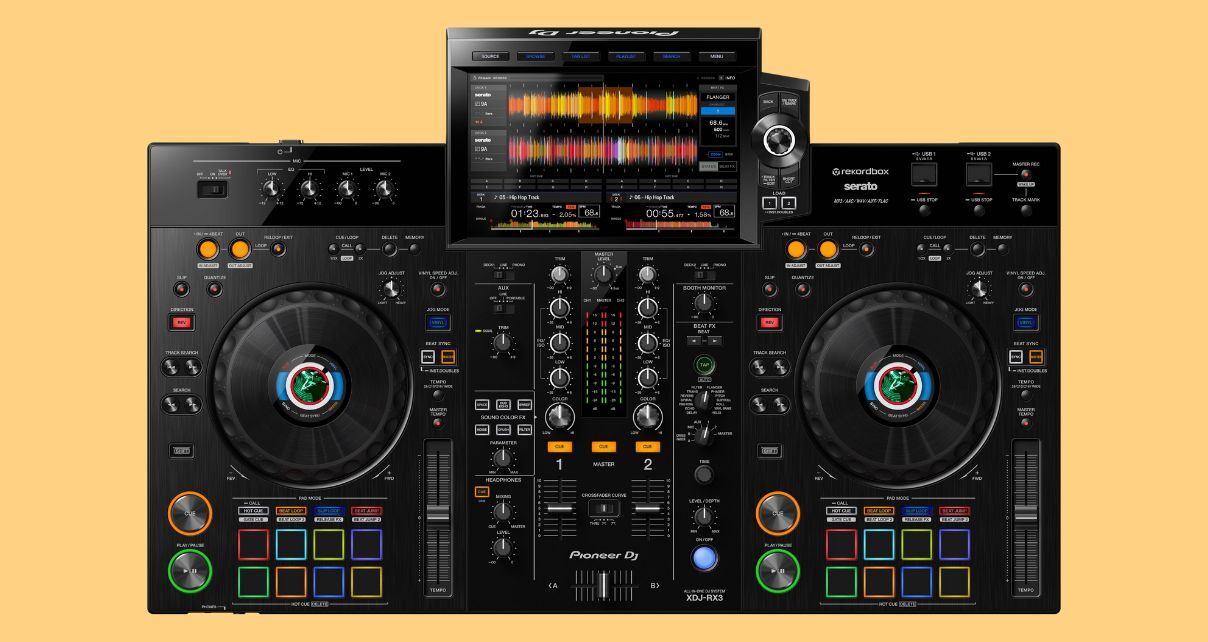
The RX3 is a smaller, cheaper, more portable, two-channel standalone unit that nonetheless has a great screen, up-to-date software, and most of the features most DJs need most of the time. It could just be that you have absolutely no need for the extra things that the XDJ-AZ brings to the table for its increased weight and price.
The biggest omission on the RX3 for me is any kind of key sync or key shifting, which is a deal breaker for the way I DJ. But if you can put up with that, you’ll find that the RX3 is a fantastic workhorse, and it’s justifiably popular. It’s probably the most common of all of these units that I see when out and about in bars and so on.
The RX3 therefore does seem to hit a sweet spot for many. I do suspect that the AZ is going to give it a run for its money over the coming years, though.
AlphaTheta XDJ-AZ vs 2x Pioneer DJ CDJ-3000s and A9 mixer
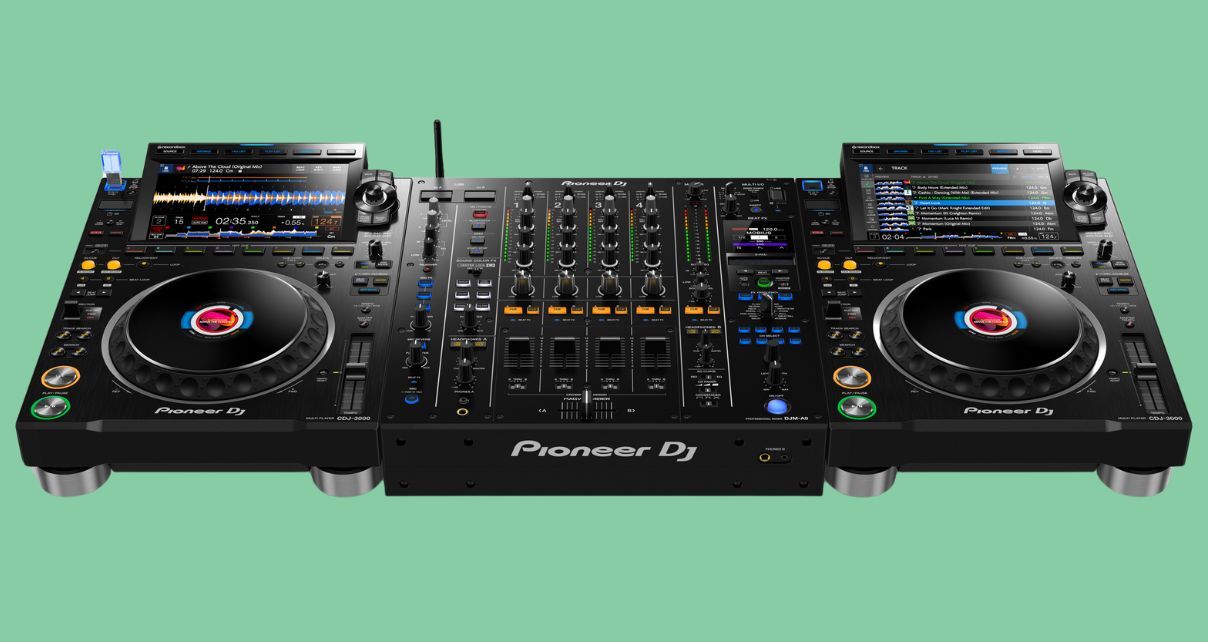
A pair of CDJ-3000s and an A9 mixer will give you the bona fide club DJ experience. On a CDJ-3000 and A9 setup, by definition, you’re getting everything that is in most clubs: There’s a screen for each of the CDJ-3000s, whereas on the AZ, you’re putting up with one screen for both. The performance pads are in the single row of eight above the jogwheel on the CDJ-3000s as opposed to underneath it. And you’re getting far more inputs and wider flexibility in general on the mixer, in comparison to the (still highly featured) mixer on the AZ.
If you absolutely must have 100% “club standard” or you truly value the modularity, meaning you can switch things out should they break or should you have different requirements from gig to gig, then possibly it’s worth shelling out the extra for the separates – but you will be paying a huge premium for that. That’s why for most people, I suspect it wouldn’t make sense at all.
You can imagine that there were conversations inside the AlphaTheta boardroom about how many sales of the CDJ-3000s and DJM-A9 mixer the AZ is going to cannibalise, because it really does in nearly all meaningful ways give you everything you need from that 100% “pro” DJ set-up one up in the food chain.
Finally..
They’ve hit a home run with this one. If you’re serious about your DJing and you want something Pioneer/AlphaTheta, this is the one to go for.
It’s future-proof with all the most modern features built in. It works with four channels of standalone as well as the two most popular DJ software packages on the market. It’s got Wi-Fi, Bluetooth, the most popular DJ subscription service for dance music, cloud library functionality, full Pro DJ Link – I could go on.
In short, it’s the most complete DJ all-in-one ever released. There’s precious little that we can say against it. Buy this and you can be sure you’ll have many, many years of cutting-edge service from it. I fully expect these to fly off the shelves over the coming months.
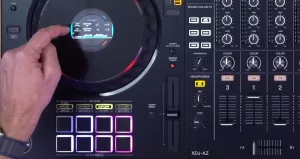


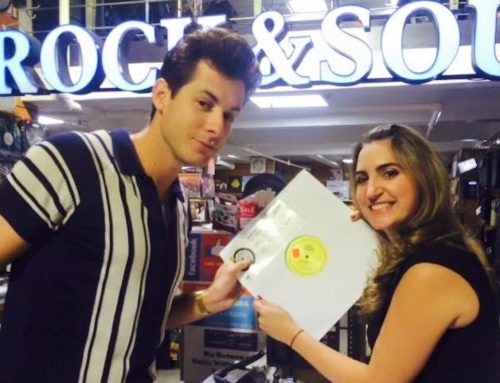


Leave A Comment
You must be logged in to post a comment.